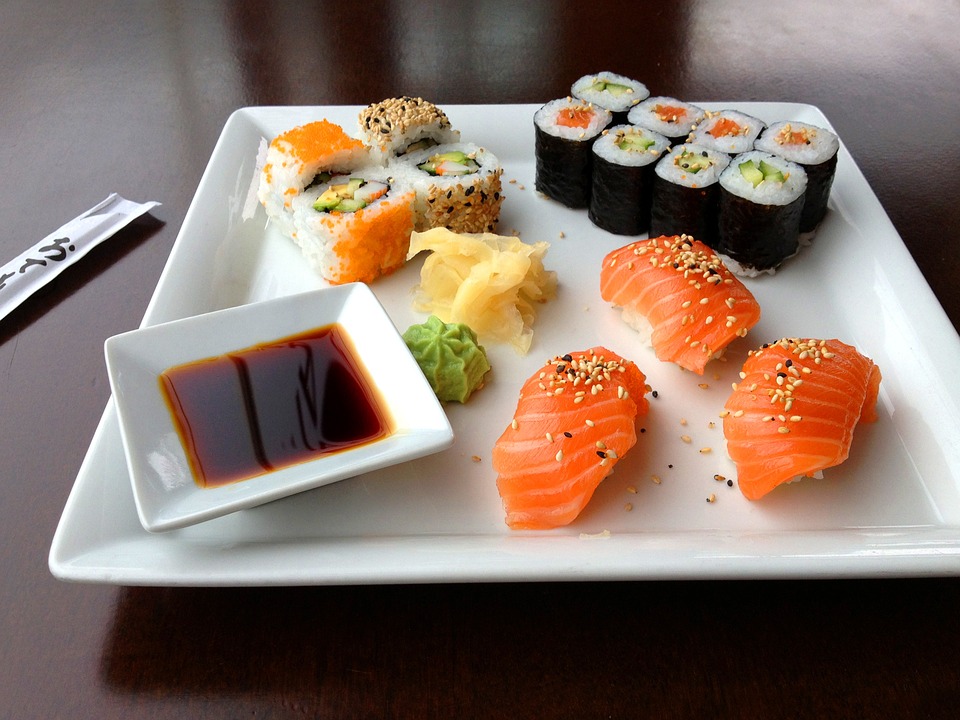Do you love sushi? And you’ve heard that sushi is super healthy for you? That it is a great additional benefit to your diet, and another reason to go to a sushi restaurant this weekend. But is that true, that sushi is healthy? If yes, how healthy is sushi? Is there something, that’s not healthy in sushi? Let’s find out!
People around the world are obsessed with sushi, especially in the past few decades. Everyone talks about sushi, how healthy and delicious it is.
Sushi seems healthy right from the start. All that rice, vegetables, fish and soy is all the good stuff that you need in your diet and all of that in one place. Sushi is indeed a very healthy meal. It’s a source of heart-healthy omega-3 fatty acids thanks to the fish. Also, it’s pretty low in calories and there is no added fat.
The most common type of sushi is nigiri sushi which is made of fingers of sticky rice topped with seafood or small filet. On average, only one piece of nigiri sushi has approximately 70 calories. If you order six pieces, it will provide you with between 310 to 420 calories which depends on the type of fish.
Maki sushi are rolls made of fish, dried seaweed (nori), and sticky rice. Most maki places, the nori is placed on the outside, but California rolls have rice on the outside. On average, one piece of maki roll has approximately 48 calories. If you order a typical 6 pieces, you will receive anywhere between 250 to 370 calories which again depends on the fish and whether it’s made with avocado or not.

How Healthy Is Sushi?
Sashimi, which is a raw fish served sliced without any rice has approximately 132 calories for six pieces.
Don’t forget that some types of sushi are high in calories such as rolls made with tempura shrimp, like Dynamite rolls which are higher in calories and fat because the shrimp has been deep fried. Also, spider rolls have mayonnaise and therefore they are higher in calories and fat. Any rolls with avocado are also higher in fat but avocado contains good and heart-healthy monounsaturated fats.
When ordering sushi, remember to ask for brown rice instead of white rice. Brown rice is more nutritious, and it has a lower glycemic index when compared to white rice.
There is one concern when it comes to sushi and that is the high amount of mercury found in some of the fish used in sushi. Women who are planning to become pregnant, or who are pregnant, who are breastfeeding should avoid high mercury fish which includes fish like king mackerel, shark, orange roughy, tuna, swordfish, and tilefish. The main concern is that too much mercury can damage a baby’s nervous system and developing brain. The same is applicable for children. Mackerel and tuna are the most common at sushi restaurants. It’s important to know when and why to avoid this type of fish.
Also, it’s important to go easy on soy sauce, especially if you have high blood pressure. One tablespoon of regular soy sauce has approximately 900 to 1000 milligrams of sodium which is more than half of the day’s recommended worth. Light soy sauce has around 25% less sodium, in other words, that’s 600 to 800 milligrams per tablespoon which is considerably lower.
Overall, sushi is probably the best diet and meal for an easy Friday night out. Sushi comes from Japan, a country which is very well known for fish production and healthy diets. Beside the Mediterranean diet, sushi is on top of the healthiest diets in the world. Needless to say, if you need to choose between McDonald’s and a local sushi restaurant, always go for sushi.




